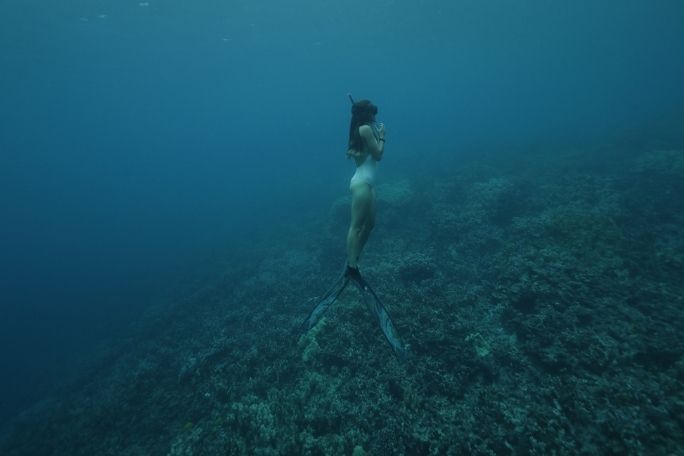Lesson summary
This lesson incorporates clips from Blue The Film as learning inspiration. Students are invited to engage in a hands-on activity to help them visualise connections between the different components of an ecosystem. The strategy used, hexagonal thinking, provides the opportunity for students to build their knowledge, attitudes and values by themselves. Students will begin the lesson by watching a clip about coral bleaching, and then explore the relationship between human activities and the health of ocean ecosystems and organisms. Finally, students are asked to consider how human activities could be altered to minimise impacts on marine ecosystems and organisms
Learning intentions:
Students will...
- understand that ocean ecosystems are communities of interdependent organisms and abiotic components of the environment
- recognise some of the actions they can take to help marine ecosystems and organisms.
Success criteria:
Students can...
- understand that organisms in the ocean ecosystem are interconnected
- understand that abiotic components of the ecosystem affect the biotic components and vice versa.
- articulate how humans can impact ocean ecosystems, both directly and indirectly.
Lesson guides and printables
Lesson details
Curriculum mapping
Australian curriculum content descriptions:
Year 9 Science:
- Ecosystems consist of communities of interdependent organisms and abiotic components of the environment; matter and energy flow through these systems (ACSSU176).
- Communicate scientific ideas and information for a particular purpose, including constructing evidence-based arguments and using appropriate scientific language, conventions and representations (ACSIS174).
Syllabus outcomes: SC5-14LW, SC5-9WS
General capabilities: Critical and Creative Thinking
Cross-curriculum priority: Sustainability OI.2, OI.7
Relevant parts of Year 9 Science achievement standards: Students analyse how biological systems function and respond to external changes with reference to interdependencies. They use appropriate language and representations when communicating their findings and ideas to specific audiences.
Unit of work: Blue The Film – Science – Year 9 & 10
Time required: 60 mins.
Level of teacher scaffolding: Low – allow students to explore the topic independently.
Resources Required
- Student Worksheet – one copy per student
- Device capable of presenting a clip to the class
- Ocean Ecosystem Interactions – Hexagonal Thinking (one per pair of students)
- Butcher’s paper, Blu-tack, pens/pencils, scissors
Skills
This lesson is designed to build students’ competencies in the following skills:
- Communication
- Collaboration
- Critical thinking
Additional info
Blue is a feature documentary film charting the drastic decline in the health of our oceans. With more than half of all marine life lost and the expansion of the industrialization of the seas, the film sets out the challenges we are facing and the opportunities for positive change. Blue changes the way we think about our liquid world and inspires the audience to action. Find out how to screen or download the film here. Along with the film is an ambitious global campaign to create advocacy and behaviour change through the #oceanguardian movement. To become an ocean guardian, see the website.


Welcome back!
Don't have an account yet?
Log in with:
By signing up to Cool.org you consent and agree to Cool's privacy policy to
store, manage and process your personal information. To read more, please see
our privacy policy here(Opens in new tab).
Create your free Cool.org account.
Many of our resources are free, with an option to upgrade to Cool+ for premium content.
Already have an account?
Sign up with:
By signing up to Cool.org you consent and agree to Cool's privacy policy to
store, manage and process your personal information. To read more, please see
our privacy policy here(Opens in new tab).